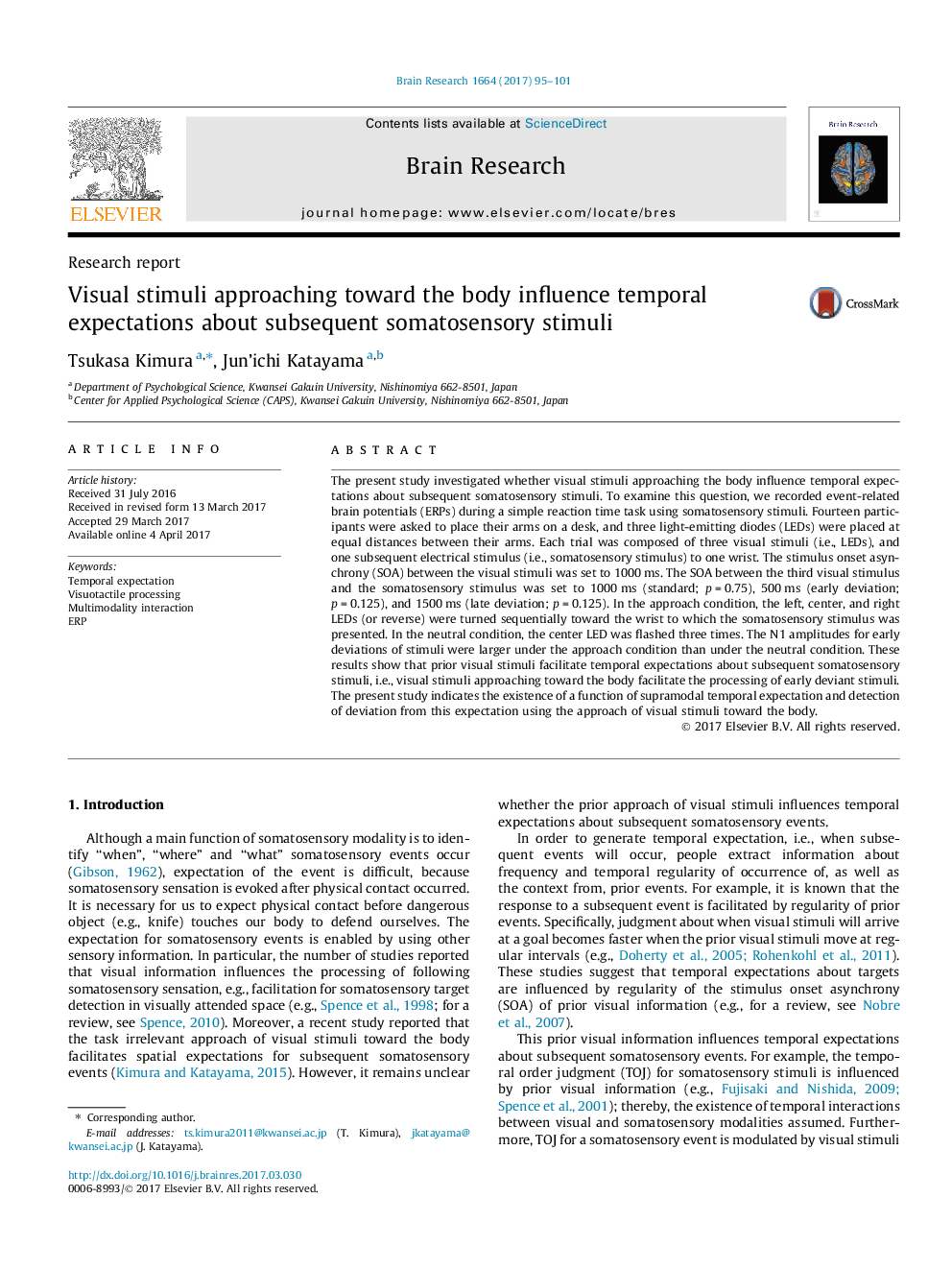ترجمه فارسی عنوان مقاله
محرک های بصری نزدیک به بدن، انتظارات زمانی را در مورد محرک های سموتوسنسوری بعدی به وجود می آورند
عنوان انگلیسی
Visual stimuli approaching toward the body influence temporal expectations about subsequent somatosensory stimuli
| کد مقاله | سال انتشار | تعداد صفحات مقاله انگلیسی |
|---|---|---|
| 128667 | 2017 | 7 صفحه PDF |
منبع

Publisher : Elsevier - Science Direct (الزویر - ساینس دایرکت)
Journal : Brain Research, Volume 1664, 1 June 2017, Pages 95-101

